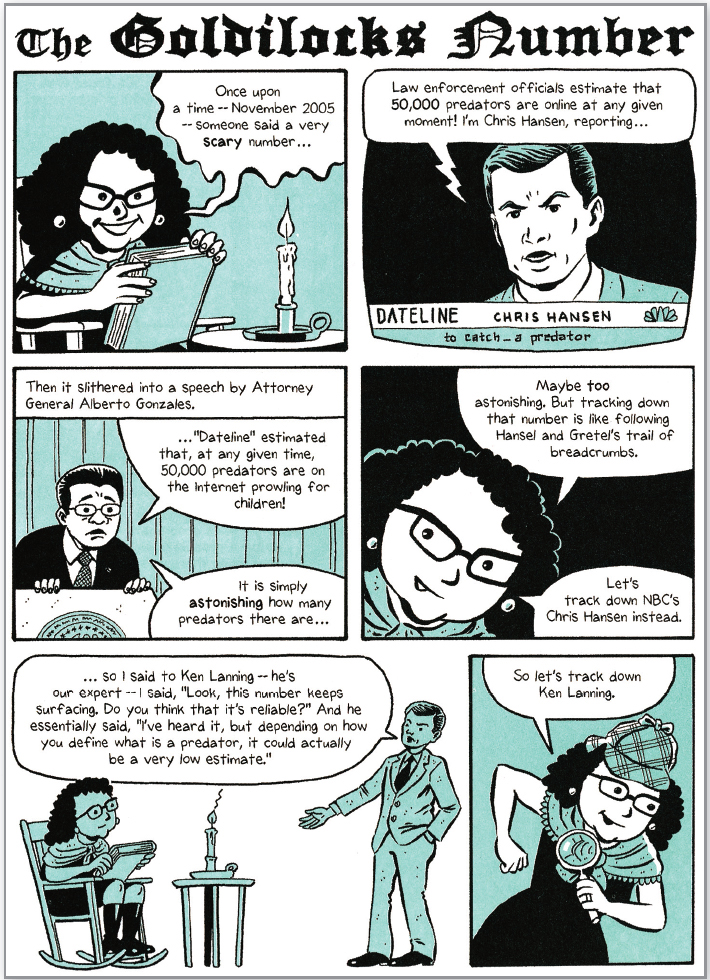 | Brooke Gladstone |
| The Goldilocks Number |
“The Goldilocks Number” first appeared in Brooke Gladstone’s book The Influencing Machine: Brooke Gladstone on the Media, illustrated by Josh Neufeld, and it was adapted from a radio segment Gladstone produced for NPR in 2010. Gladstone, a journalist and media analyst, calls The Influencing Machine a “media manifesto” in which she challenges readers’ common assumptions about media. As you read, pay attention to how the illustrations enhance Gladstone’s analysis and help distinguish her own ideas from those of her sources.
For a closer look, click on each image to enlarge it.



| Starting a Conversation: Respond to “The Goldilocks Number” | |
 | In the text boxes below, reflect on Gladstone’s analysis on by responding to the following questions: |
Question
“The Goldilocks Number” begins by inquiring into the story behind a seemingly improbable statistic. What leads Gladstone to question the numbers she keeps hearing? Why do you think she chooses the sources she does to find answers?
Question
Gladstone traces her evidence back through several layers in order to find out the truth behind the statistic, and in the last panel of the first page, Neufeld depicts Gladstone in a detective’s outfit with a magnifying glass. In what ways does Gladstone’s research resemble that of a detective? What questions does she return to as she tracks down each new source? How do those questions — and the answers she finds — shape her analysis?
Question
Rhetorical analysis is a specific type of analysis. In what ways is Gladstone’s analysis of the Goldilocks number a rhetorical analysis? How does she take into consideration the context and audience around her questions?
Question
Many of the experts Gladstone cites in her analysis were also cited in a 2006 National Law Journal article by Jason McClure that addresses the very same misuse of the number 50,000. How might Gladstone have better acknowledged this article in her work?
Question
Gladstone concludes with the comment, “Sometimes the simplest reasons are the scariest.” What does she mean, exactly? In what ways are the “simplest reasons” the most frightening in this situation, and to whom?